I had the opportunity to visit Morocco in 2019. I joined author and anthropologist Dr Susan Schaefer Davis who led a group tour visiting the women she wrote about in her book Women Artisans of Morocco – Their Stories, Their Lives, published by Thrums Books (now known as Schiffer Publishing).
On this tour, we visited the button makers of Sefrou. It was a revelation to me – the small city of Sefrou, the community of women, and of course, the buttons. In this episode, I am speaking to Jess Stephens. I did not meet her while in Sefrou, but I learned about her and her work through Susan who told me about Culture Vultures, Jess’s community art program in Sefrou. As a non-Moroccan Sefrouian, Jess is the ideal person to pick up the story of the buttons and share it with the world.
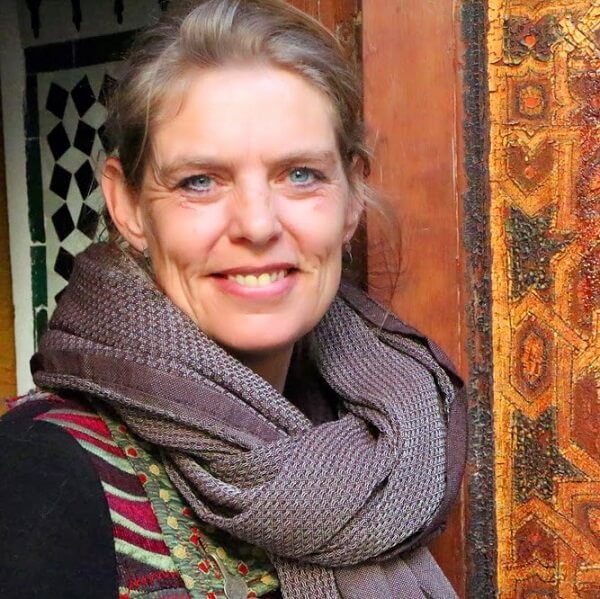
Jess Stephens
Sefrou
Before we talk about the buttons, Jess sets the scene for us. She tells us about the city and its inhabitants, its history as a trade hub, the craft heritage, and the geography. She also tells us how she, as a UK-born Western woman, came to make Sefrou her home. She tells us about her art centre, Culture Vultures and the men and women she works with inside the arts hub – and we get to hear them working!
Women Artisans of Morocco – my book review
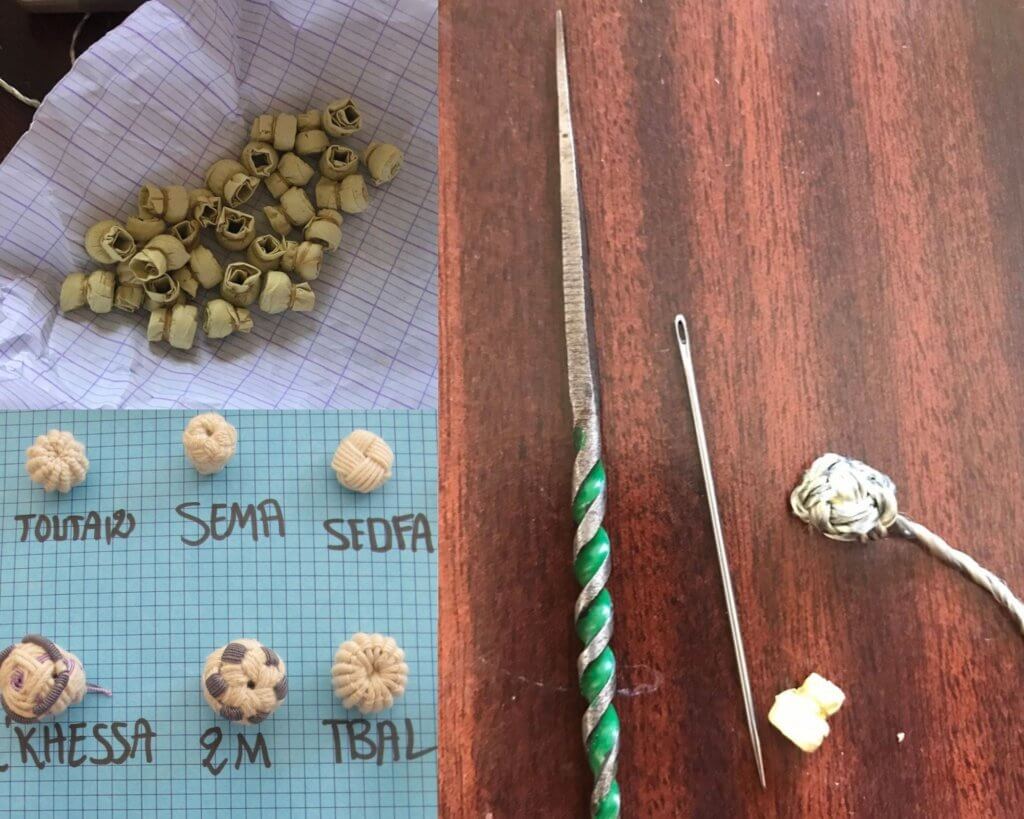
Paper cores, samples of different button styles, and the tools of the trade. Image by me taken at Amina Yabis’ home.
The Buttons
Jess tells us about the context of the buttons – how and where they are used, and then she tells us how they are made – the threads, and the tools, and the many different styles and designs.
“If the buttons could talk… They bring with them this incredible heritage. And they are there, in a sacred space – in a women’s space. They are made by women and they really bring with them a big social commentary. If they could talk, they would have a lot to say!”
The Women
We talk about how button making fit around the women’s other household duties, how much they can do in a day, and what happens to the buttons once they have been produced.
“It is not typically a communal craft. But I think, it is human nature that people are coming outside their houses and hanging out at a certain time of the day when their domestic duties are done.”
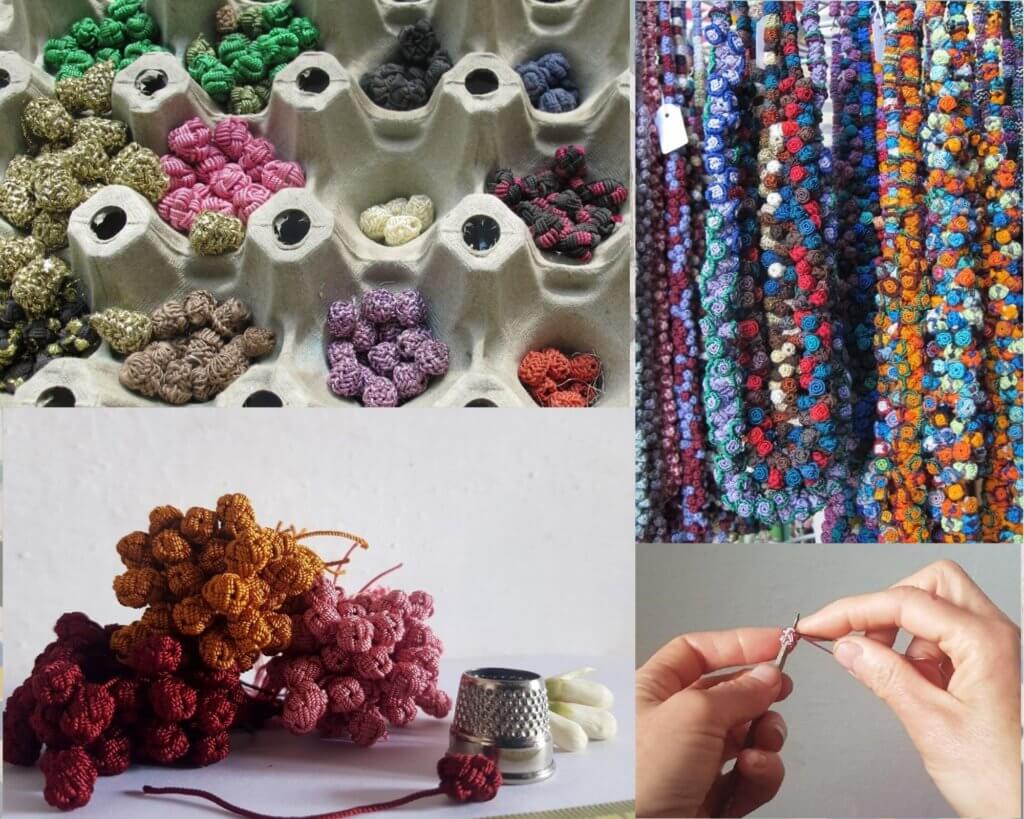
Button stash at Amina’s home, button jewellery made by the women from the Cherry Button cooperative, a bouquet of buttons by Sefrou Sisters, button making demonstration. Top images by me, Bottom images by Jess Stephens.
The Market
Jess explains to us how the button supply chain works and where the button makers fit into this chain. She explains the benefits and problems of supplying to tailors, haberdashery shops, and button wholesalers. She also talks about the different factors impacting the price and how it affects the women.
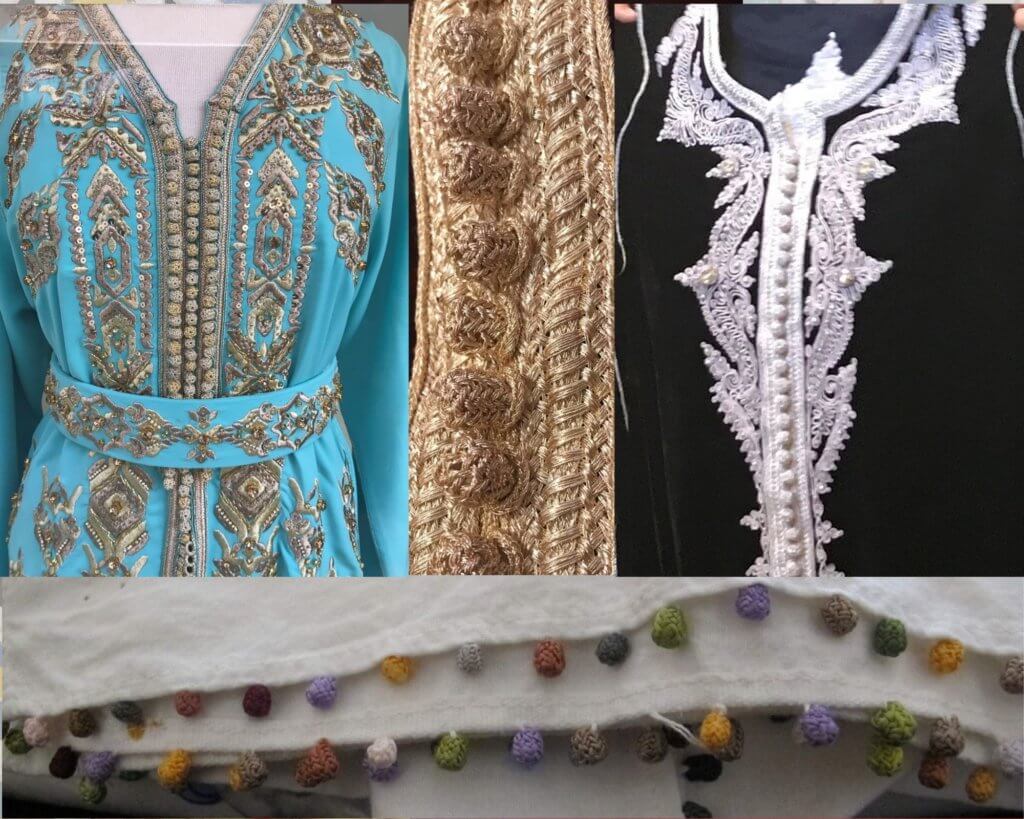
Buttons on a variety of Kaftans. Buttons added to a scarf by the women of Cherry Buttons cooperative. Images by me.
The Co-operatives
Amina Yabis, the button maker I met when I visited in 2019, started one of the first cooperatives for women called The Cherry Button Cooperative. Jess tells us about Amina and how she helped empower the women of Sefrou. Jess also explains to us how the cooperatives came about, the social challenges the women face, and how they are overcoming them.
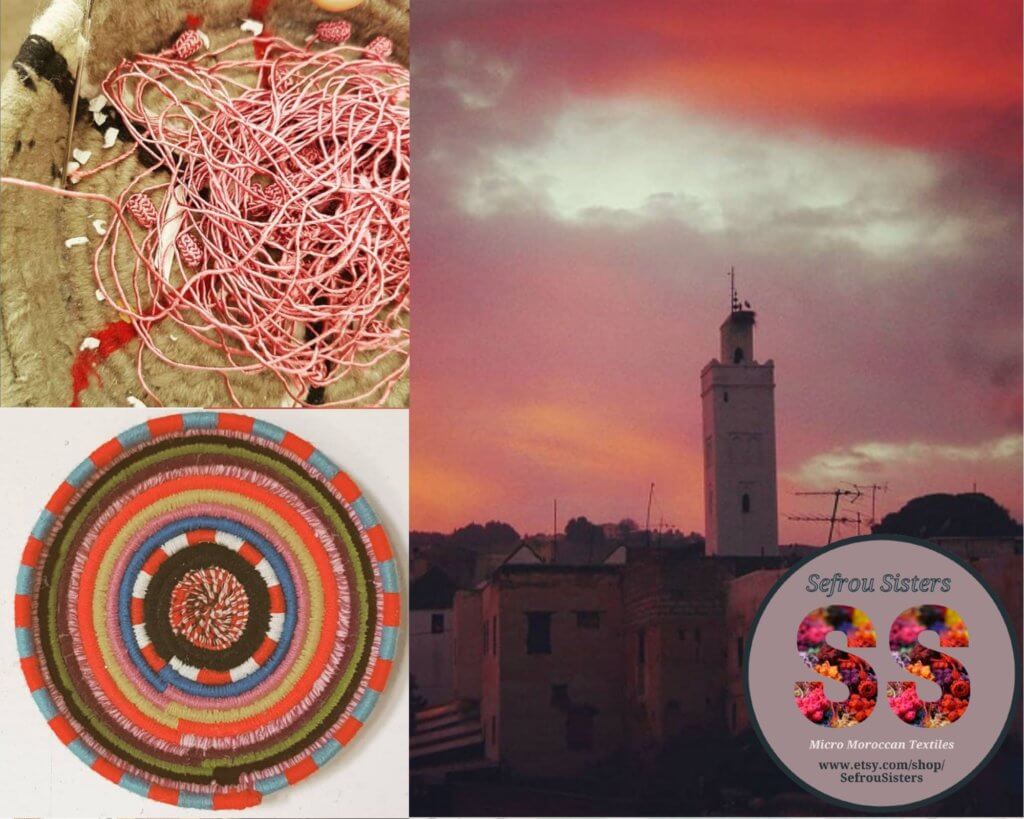
Sefrou Sisters – textile bowl with materials, sunset over Sefrou. Images by Jess Stephens
Sefrou Sisters
“I’m deeply connected with the crafts as a practising artist myself, and I’m always fascinated by how things are made. The button is the simplest form of all that represents Sefrou. The button was screamingly obvious as something that is simple but has an important impact.”
Jess co-founded Sefrou Sisters with the aim of helping some of the button makers find a new market for their products. She explains what they are doing, the impact they are making and the challenges they are still facing.
Sefrou Sisters Instagram: @sefrou_sisters
Sefrou Sisters Etsy shop
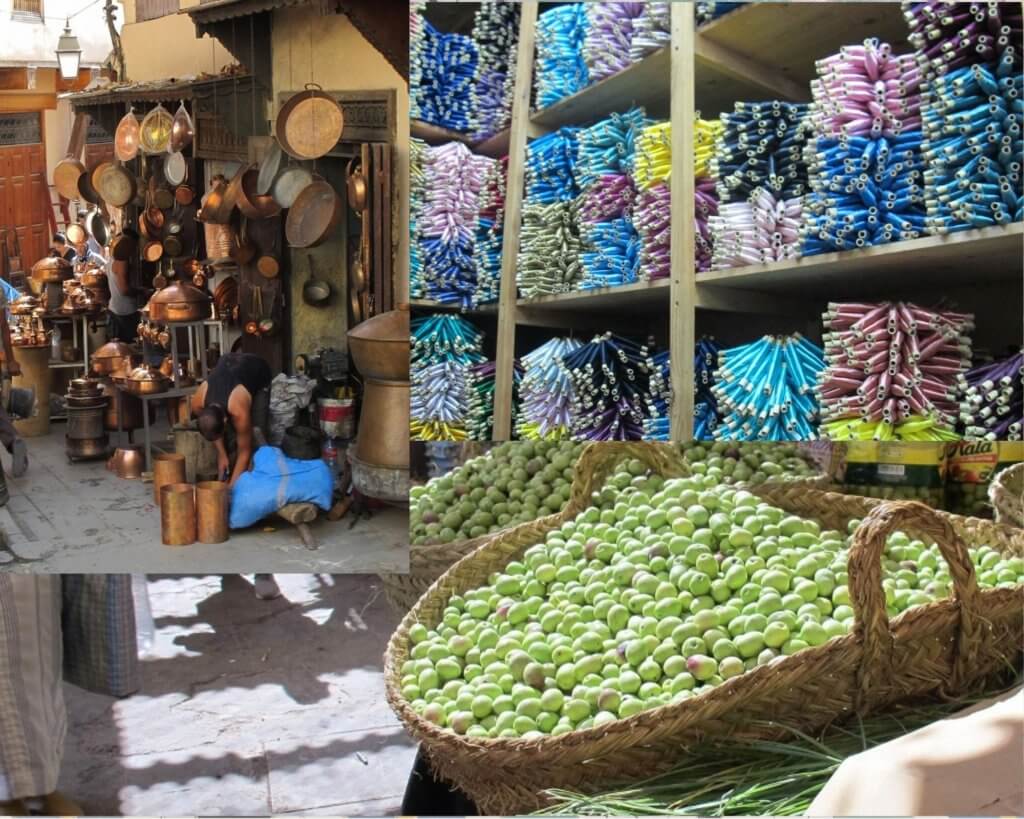
In and around the medina. The rayon threads used for the buttons are sold by wholesalers in a variety of colours in single thread spools. Images by me.
As I told Jess, “I was thinking about these little buttons. It is almost like a symbol of the women who make them – they are small, and you don’t really notice them. And then the next thing you know, you look at one garment, and there are 290 buttons! That is a symbol of the women – they are insignificant, and they almost disappear into the background. But once you really focus on them and look at them, you see the infinite details and you see all the colours and how they shine. You see their intricacies and their depth.”

NO COMMENT